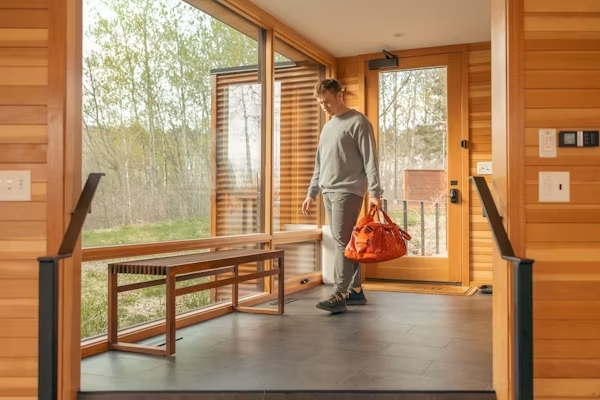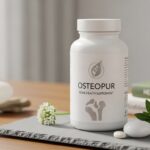In an age where sustainability and style intersect, Wollmatten—a term derived from the German words “Woll” (wool) and “Matten” (mats)—has emerged as a popular eco-friendly flooring choice. Combining natural materials with timeless design, Wollmatten offer warmth, durability, and environmental responsibility, making them an ideal solution for both residential and commercial spaces. As the demand for green living continues to grow, understanding why Wollmatten stands out as a sustainable flooring option is essential.
What Are Wollmatten?
Wollmatten are floor coverings made primarily from natural wool fibers. These mats or carpets can vary in thickness, weave, and color, offering a wide range of aesthetic options. Unlike synthetic carpets made from petroleum-based materials, Wollmatten rely on renewable and biodegradable resources, making them a favorite among eco-conscious homeowners and interior designers.
The wool used in Wollmatten is often sourced from ethically raised sheep, and the production process typically involves minimal chemical treatments. This ensures that the finished product maintains its natural qualities—softness, resilience, and excellent insulation properties—without compromising on sustainability.
Why Choose Wollmatten?
1. Sustainable and Biodegradable Materials
Wool is a 100% natural, renewable fiber. Sheep regrow their fleece annually, providing a consistent and sustainable supply. Unlike synthetic alternatives such as nylon or polyester, which are derived from fossil fuels, wool decomposes naturally at the end of its lifecycle. This reduces landfill waste and environmental pollution.
Additionally, many manufacturers of Wollmatten use eco-friendly dyes and water-based treatments, ensuring the product has minimal ecological impact from production to disposal.
2. Excellent Insulation Properties
One of the most notable advantages of Wollmatten is their thermal efficiency. Wool fibers naturally trap air, which acts as an insulator. This helps maintain a comfortable indoor temperature—keeping homes warm during winter and cool in the summer. As a result, homeowners can reduce their reliance on heating and cooling systems, lowering energy consumption and utility bills.
Acoustic insulation is another benefit. Wollmatten absorb sound effectively, reducing echoes and noise levels in busy households or office environments.
3. Durability and Longevity
While soft underfoot, wool is an incredibly durable material. Wollmatten can withstand heavy foot traffic and retain their appearance for many years if properly maintained. The natural elasticity of wool fibers allows them to recover from compression, preventing permanent dents and wear marks commonly seen in synthetic carpets.
Moreover, wool has a natural resistance to dirt and crushing, making Wollmatten a practical choice for high-traffic areas such as hallways, offices, and living rooms.
4. Natural Resistance to Stains and Odors
Wool fibers have a protective outer layer that repels water and prevents stains from penetrating deeply. This natural resistance makes cleaning easier and reduces the need for harsh chemical detergents. Additionally, wool’s ability to absorb and neutralize odors contributes to a fresher indoor environment—ideal for households with pets or young children.
5. Health Benefits
Indoor air quality plays a crucial role in overall well-being. Wollmatten contribute positively by absorbing airborne contaminants such as volatile organic compounds (VOCs) and formaldehyde. Wool’s unique molecular structure binds these pollutants, preventing them from circulating in the air and improving indoor air quality.
Furthermore, since Wollmatten are made from natural materials and often free from synthetic coatings, they are hypoallergenic and safe for people with respiratory sensitivities.
Design Versatility: Style Meets Sustainability
Wollmatten are available in a wide variety of designs, from minimalist neutrals to bold, colorful patterns. Whether you prefer a Scandinavian-inspired aesthetic, a rustic farmhouse feel, or modern luxury, there’s a Wollmatten style to suit every interior.
Manufacturers offer options in various textures—loop pile, cut pile, or flat weave—allowing homeowners to choose the perfect combination of softness and resilience. Additionally, custom sizes and colors are often available, enabling creative freedom for architects and designers.
For those who appreciate handcrafted details, many Wollmatten are produced using traditional weaving techniques, adding cultural and artisanal value to the product. This fusion of modern sustainability with age-old craftsmanship creates a floor covering that tells a story of both environmental awareness and aesthetic beauty.
Eco-Friendly Manufacturing Processes
The production of Wollmatten aligns closely with sustainable manufacturing principles. Responsible producers emphasize:
-
Ethical Wool Sourcing: Sheep are raised under humane conditions, and shearing practices follow animal welfare standards.
-
Low-Energy Production: Many manufacturers utilize renewable energy sources such as solar or wind power.
-
Water and Waste Management: Advanced recycling systems minimize water usage and reduce waste during the dyeing and finishing stages.
-
Non-Toxic Treatments: Instead of chemical-heavy flame retardants or stain protectors, natural alternatives like lanolin or plant-based solutions are used.
These practices ensure that every stage of Wollmatten production—from raw material sourcing to final installation—maintains an environmentally friendly footprint.
Maintenance and Care Tips for Wollmatten
To ensure longevity and maintain the natural beauty of Wollmatten, proper care is essential. Here are some tips:
-
Regular Vacuuming: Vacuum once or twice a week to remove dust and debris before it embeds into the fibers.
-
Spot Cleaning: Blot spills immediately with a clean cloth and use mild, wool-safe detergents. Avoid rubbing or using hot water.
-
Professional Cleaning: Schedule professional wool carpet cleaning every 12–18 months to refresh the fibers and remove deep-seated dirt.
-
Rotate Furniture: Occasionally move furniture to prevent uneven wear or fading.
-
Avoid Direct Sunlight: Prolonged exposure to sunlight can fade colors, so use curtains or blinds where necessary.
With minimal care, Wollmatten can last for decades, offering exceptional return on investment.
Environmental and Social Impact
Beyond the material benefits, Wollmatten contribute to a broader ecological and social movement. By choosing sustainable flooring, consumers support responsible industries and encourage a shift away from resource-intensive manufacturing. The wool industry, when managed ethically, provides income for rural communities and helps maintain grassland ecosystems through responsible grazing.
Moreover, supporting brands that produce Wollmatten often means backing companies that value transparency, fair labor practices, and environmental accountability—values that align with the growing global movement toward conscious consumerism.
Comparing Wollmatten to Other Flooring Options
| Flooring Type | Sustainability | Durability | Maintenance | Comfort | Cost |
|---|---|---|---|---|---|
| Wollmatten (Wool Mats) | High | Excellent | Moderate | High | Moderate to High |
| Vinyl Flooring | Low | Moderate | Easy | Low | Low |
| Laminate Flooring | Moderate | High | Easy | Medium | Moderate |
| Hardwood Flooring | Moderate to High | High | Moderate | Medium | High |
| Synthetic Carpet | Low | Moderate | Moderate | High | Low |
As shown above, Wollmatten outperform most synthetic and conventional flooring options when it comes to sustainability and comfort, while offering comparable durability and aesthetic appeal.
Future Trends: The Rise of Eco-Luxury Flooring
As sustainability becomes a central concern in architecture and interior design, eco-luxury flooring like Wollmatten is gaining popularity. Consumers increasingly value materials that reflect their environmental ethics without compromising comfort or elegance. Innovative advancements in dyeing, weaving, and recycling technologies continue to expand the versatility of wool flooring, making it an even more attractive option for modern spaces.
Architects and designers are incorporating Wollmatten into green building projects, where certifications such as LEED (Leadership in Energy and Environmental Design) reward the use of renewable materials. As a result, Wollmatten are not just a design trend—they represent a long-term commitment to sustainability and wellness.
Conclusion: Wollmatten—A Step Toward a Greener Future
Wollmatten beautifully merge sustainability, comfort, and design into a single flooring solution. Made from renewable natural fibers, they provide exceptional insulation, durability, and aesthetic appeal—all while reducing environmental impact. As the world embraces more eco-friendly living solutions, Wollmatten stand out as a symbol of responsible luxury.






